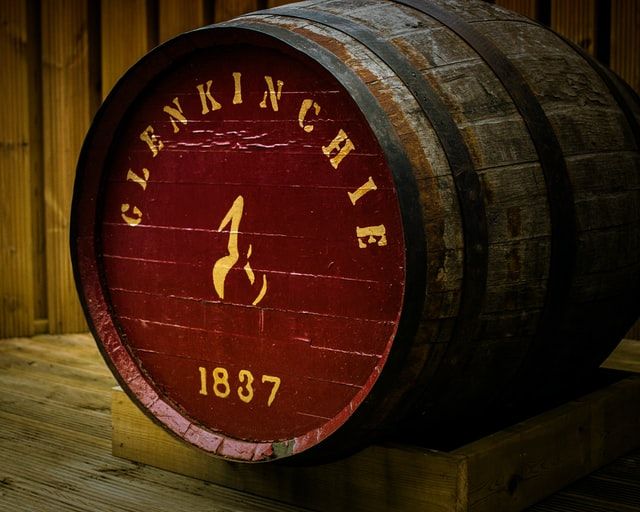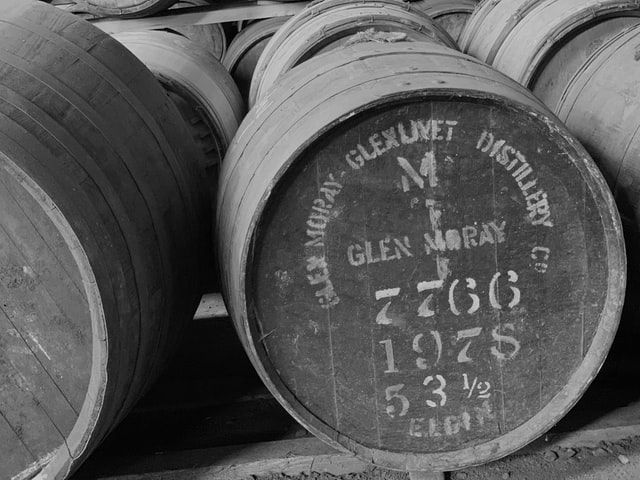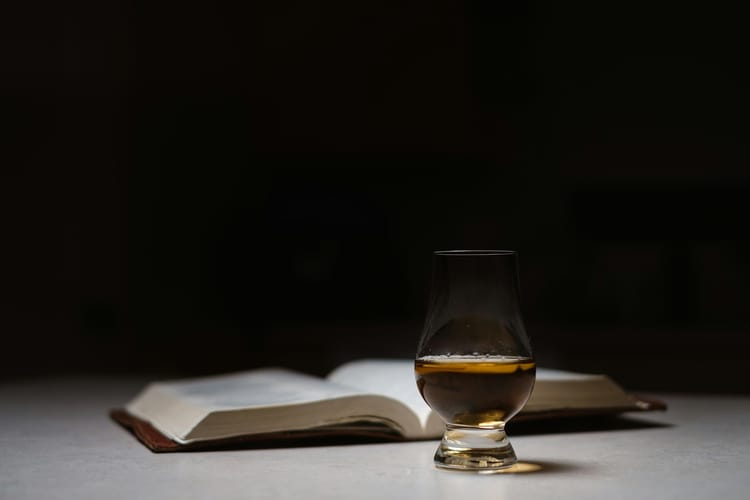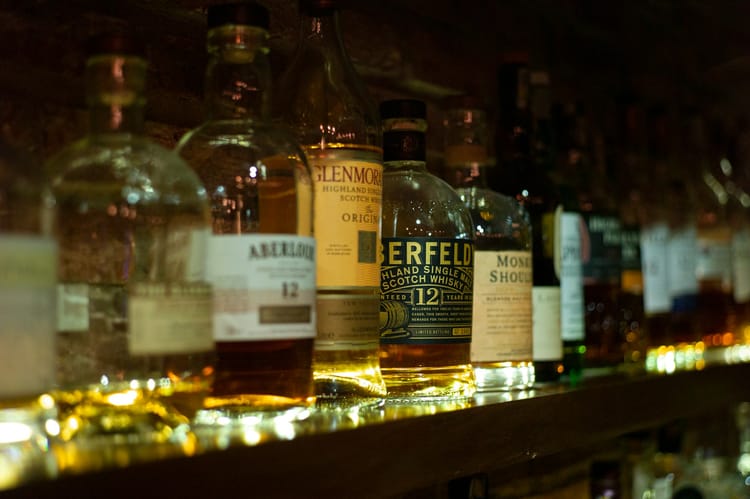Ageing whisky - an introduction to casks

In this Newsletter, we'll talk about the different casks used in making whisky.
As you probably already know, in making whisky, the spirit is poured into wooden casks, and left to age for some time. After that, it is bottled and ready to drink. The period it spends in the cask is known as the ageing or maturation period.
There are different types of casks available for maturing whisky. The type of cask used has an impact on the final product.
In this Newsletter, I will introduce you to the main casks used in the ageing (or maturing) of whisky.
Cask size
First, a word about cask size.
The size of the cask has an impact on the whisky within it. Smaller casks mean more interaction between the wood and the whisky. This helps the whisky to mature quicker. Also, the increased interaction may impart some of the wood's flavour to the whisky. Whiskies matured in larger casks tend to take a longer time to mature, and their flavours might not be much impacted by the wood of the cask.
Here are the main casks used in the making of whisky:
- Bourbon barrel
- Hogshead
- Sherry casks (also known as ‘sherry butts’); and
- Quarter casks
Let's look at these in turn.

Bourbon barrel
Also known as the American Standard Barrel (ASB), the bourbon barrel is made of American white oak, and is traditionally used in the ageing (or maturation) of bourbon.
Bourbon is a US whiskey. The US rules stipulate that bourbon must be aged in new (i.e. unused) charred oak casks.
This means that you cannot age bourbon in a previously used barrel.
So what then happens to all the previously used barrels? The common practice is to export them to whisky producers in other countries, where they may be used to age whisky. For example, there is nothing preventing Scotch whiskies from being aged in a previously used barrel. As such, Scotch whisky producers frequently import bourbon barrels and use them in ageing their own whiskies.
The standard size of a bourbon barrel is 53 gallons. The US uses ‘gallon’ as a unit of measurement, hence the use of gallons here. However, I find it better to work with litres, so that we can compare the bourbon barrel to the other (non-US) barrels mentioned below. Fifty-three gallons works out to approximately 200 litres.
Hogshead
Hogsheads are generally made from American white oak.
Most hogsheads began life as bourbon barrels, although some previously held sherry before being used to age whisky.
Hogsheads are larger than bourbon barrels. Basically, five bourbon barrels make four hogsheads.
As mentioned above, bourbon barrels are exported to countries where they can be used in ageing whisky. Hogsheads are often created from such barrels.
How does this work? Let’s take the example of reused bourbon barrels being imported into the United Kingdom, to be used in ageing Scotch whisky. The barrels are dismantled before import, and then later reassembled. However, in reassembling them, the practice is that the staves of five bourbon barrels are reassembled to create four (instead of five) barrels. Thus, five becomes four.
The size of a hogshead ranges from 225 to 250 litres.
Given the large size of the hogshead, there is less interaction between wood and whisky, leading to a longer maturation time for the whisky.
As mentioned above, some hogsheads previously held sherry (and not bourbon). The Arran Sherry Cask (aka The Bodega) is a good example of a whisky that was matured in a first-fill sherry hogshead, in this case, for seven years.
Sherry butts (or sherry casks)
Sherry butts are at least twice the size of bourbon barrels; they generally contain around 500 litres.
As the name suggests, sherry casks were previously used to hold sherry. They are generally made from Spanish oak, although you can come across some that are made from American white oak.
How did sherry casks come to be used in the maturation of whisky?
Long, long ago, sherry casks were used to import sherry into the United Kingdom. After the casks had served their purpose in bringing the sherry over, the sherry would be bottled in the UK, and the casks sold on to whisky distillers, who would use them in ageing their whiskies.
These days, however, things have changed. Sherry is no longer predominantly imported (to the UK) in casks. The current practice is to bottle it in Spain, and then ship it over in its bottled state. This change has meant that the casks used to make the sherry are no longer brought to the UK; they are left behind at the bodegas in Spain.
So, in the absence of a sherry cask, what’s a Scotch whisky producer to do?
Well, it can make do with the next best thing - a cask seasoned with sherry.
Basically, a sherry producer (in Spain) gets a cask, keeps some sherry in it for a few years, empties it out, then exports the empty cask to the Scotch whisky producer. So the Scotch whisky producer gets a cask that has been seasoned with sherry; it’s not the sherry cask of old times, but it’s better than nothing.
The sorts of sherry used for seasoning these casks are generally not intended to be bottled as sherry; many such sherries are instead used to make brandy.
In a future Newsletter, we’ll talk more about sherry and its influence on whisky production.
Quarter casks
Quarter casks are smaller than the casks mentioned above. They are casks that are a quarter of the size of bourbon barrels or of sherry casks, depending on the context. Of course, given their small size, you can expect a lot of influence (of the wood) on the whisky. Because of this, distillers have to be very discerning as to which type of whiskies are suitable for maturation in a quarter cask. While some whiskies mature very well in such a small cask, it can be another story entirely for other (daintier) whiskies.
Here’s a nice whisky to try: the BenRiach Quarter Casks. I really like this one; you can just about get a hint of the wood, and it has a peppermint-type finish. Keep an eye out for this fine dram.
I hope you enjoyed this Newsletter about the different casks used in whisky making. As usual, feel free to share this Newsletter with anyone who likes whisky, and stories of whisky.

